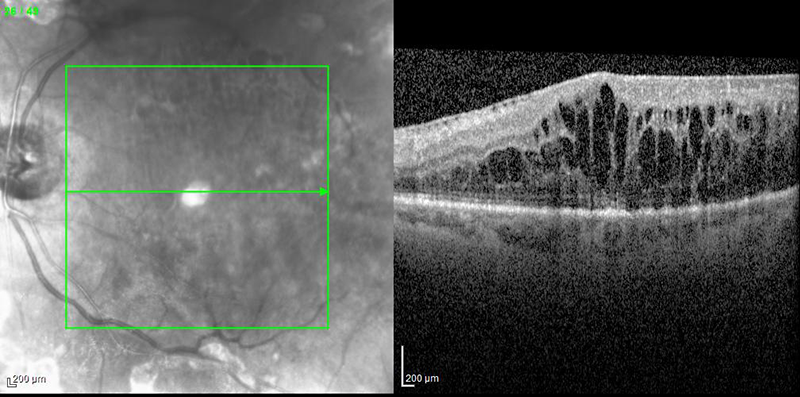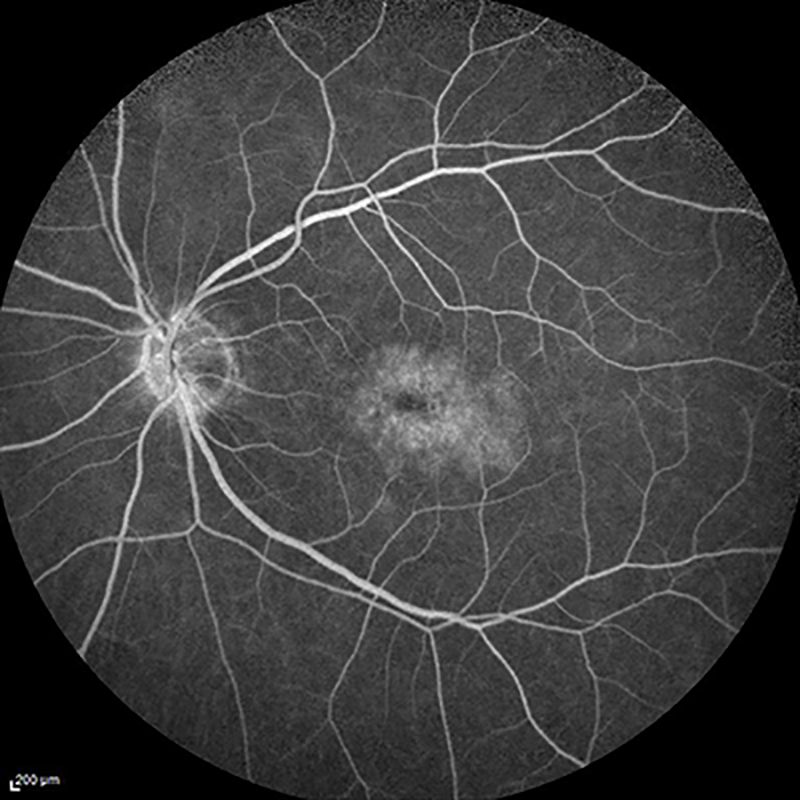Cystoid Macular Edema
 OCT of macular edema
OCT of macular edema
 fluorescein angiogram of macular edema
fluorescein angiogram of macular edema
What is Cystoid Macular Edema?
Cystoid Macular Edema (CME) occurs when swelling develops in the macula, the part of the retina that is responsible for detailed vision. When this swelling occurs, it may increase to include fluid filled cysts, which can distort vision and cause vision loss.
What causes Cystoid Macular Edema?
CME can be caused by either inflammation or a special condition called ‘vitreous traction.’ Vitreous traction means that there is an abnormal connection between the vitreous (the gel that fills the inside of the eye) and the macula. This abnormal connection causes the vitreous gel to pull or tug on the macula, leading to edema. However, inflammation is by far the most common cause of CME. This inflammation may be due to injury to the eye, eye surgery, certain medications, or other eye diseases.
Systemic diseases such as diabetes, high blood pressure, or high cholesterol, can make CME worse and more difficult to treat. This is especially true when these diseases are poorly controlled, so it is important to have these treated at the same time under the guidance of your primary care physician.
What are the symptoms of CME?
Most commonly, patients with CME complain of blurry or distorted central vision. Sometimes, other symptoms occur, such as dim vision or decreased sensitivity to light. Some patients may even have no symptoms at all.
How do you diagnose CME?
After dilating your eyes and performing an eye examination, your retina specialist may choose to conduct certain specialized imaging tests to view the retina and macula in more detail. These imaging techniques include ocular coherence tomography (OCT – a special photograph of the eye) and fluorescein angiography (FA – a test using an injected dye to study the eye in detail).
What are the treatment options for Cystoid Macular Edema?
Treatment depends on the cause of the CME, however some treatments may include medications such as steroids, non-steroidal anti-inflammatory drugs, or diuretics. These medications may be given to you in the form of eye drops, pills, or injections. You may also benefit from injection of a special medication called an ‘anti-vascular endothelial growth factor medication.’ If your condition is severe, or does not respond to the initial treatment methods, you may need to undergo surgery or laser therapy.